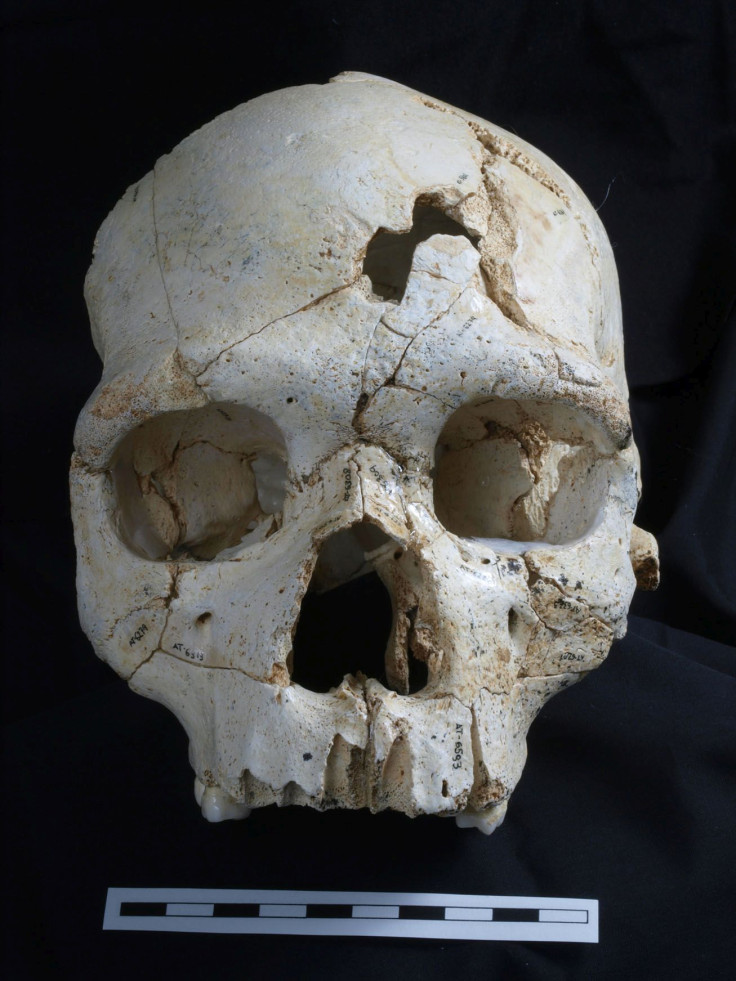Spain: World's first murder victim was stabbed in the head 430,000 years ago

What could be the world's earliest murder victim has been discovered in Spain through a skull dating to 430,000 years ago.
Lethal wounds indicating the Neanderthal had been stabbed in the head were found on the skull, researchers from the Centro Mixto UCM-ISCIII de Evolución y Comportamiento Humanos said.
The body – that of a young individual whose sex is unknown – then appears to have been dumped down a 13m deep vertical shaft, where it remained until archaeologists uncovered it thousands of years later.
The cave system contained the skeletal remains of at least 28 individuals and how the bodies got there remains a mystery – but could be evidence of the oldest funerary behaviour on record.
Publishing their findings in the journal PLOS One, the researchers said the near-complete skull – Cranium 17 – is comprised of 52 cranial fragments. They found two penetrating lesions on the frontal bone above the left eye.

Using modern forensic techniques, they were able to show the lesions were likely made by two separate impacts with the same object around the time of the individual's death.
They believe the injuries were not made by an accidental fall down the shaft because of the type of fracture and the location – they appear to have been made by two blows with the same object, raising the possibility it was a lethal act of aggression.
While the object used remains a subject of speculation, study author Nohemi Sala told IBTimes UK there are a few candidates for the murder weapon: "We are not sure what the object was. However, possibilities include a wooden spear or a stone hand axe."
If the individual was indeed already dead, researchers say they were probably carried to the top of the vertical shaft by other Neanderthals and thrown in – meaning it is likely the other individuals found in the cave had also been dumped there post mortem.
Researchers believe it is evidence of early funerary behaviour: "The evidence for funerary practices at the Sima de los Huesos site is mainly intentional human disposal of the dead inside the cave chamber," Sala said.

She said they are now studying the other skulls at the site to see if they suffered the same fate as the murder victim, but added they could not speculate on whether or not they were ritual killings: "It is impossible to interpret the motivation of the killing," she said.
Concluding, the authors wrote: "The present study has established that the individual represented by Cr-17 was already dead before their arrival at the site, and it is possible to rule out an accidental fall as a possible explanation for the arrival of this individual to the chamber. The only possible manner by which a deceased individual could have arrived at the site is if its cadaver were dropped down the shaft by other hominins.
"Thus, the interpretation of the site as a place where hominins deposited deceased members of their social groups seems to be the most likely scenario to explain the presence of human bodies at the site.
"This interpretation implies this was a social practice among this group of Middle Pleistocene hominins and may represent the earliest funerary behaviour in the human fossil record."
© Copyright IBTimes 2025. All rights reserved.






















